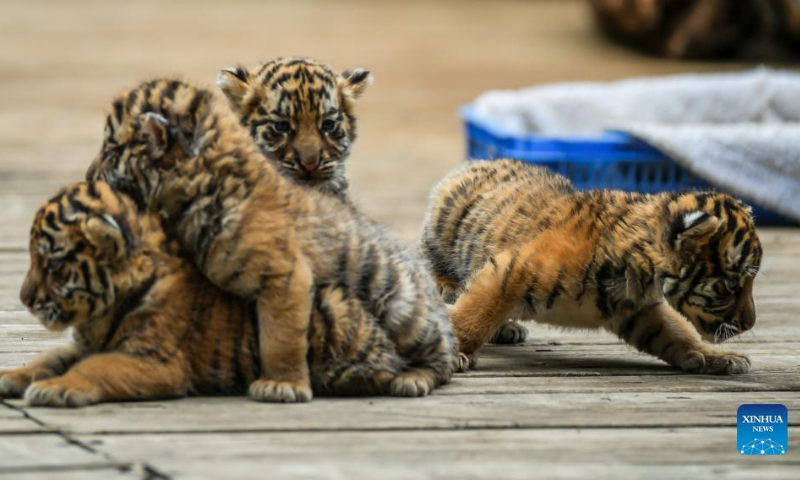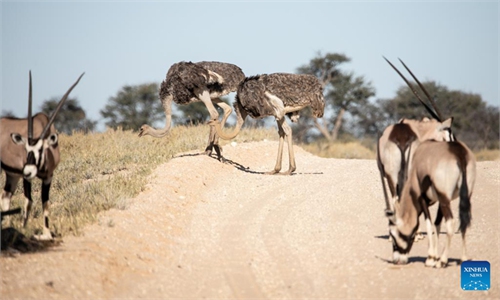Scientists say human activities driving natural habitats to the brink
Over 1 mln species facing extinction crisis

Siberian tiger quadruplets play at Yunnan Wild Animal Park in Kunming, southwest China's Yunnan Province, May 3, 2022. The one-month-old Siberian tiger quadruplets greet visitors at Yunnan Wild Animal Park during the Labor Day holiday. (Xinhua/Jiang Wenyao)
Nature is in crisis, and it's only getting worse. As species vanish at a rate not seen in 10 million years, more than 1 million species are currently on the brink.Humans are driving this extinction crisis through activities that take over animal habitats, pollute nature and fuel global warming, scientists say. A new global deal to protect nature has the potential to help, and scientists are urging the world's nations to ensure the deal is a success.
When an animal species is lost, a whole set of characteristics disappears along with it - genes, behaviors, activities and interactions with other plants and animals that may have taken thousands or millions - even billions - of years to evolve. There are some species that could soon be reduced to their own endlings. The world's smallest porpoise - Mexico's critically endangered vaquita - is down to just 18 individuals in the wild, as populations have been ravaged by fishing nets.
The Northern white rhino subspecies, the second-largest land mammal after elephants, has no hope of recovery after the last male died in 2018. Only a female and her daughter are left.
These stories of endlings matter, scientists say, precisely because so many extinctions happen out of sight.
"Somewhere in the core of our humanity, we recognize these creatures, we're touched by their story, and we feel compassion - and maybe also a moral compulsion - to help," said Paula Ehrlich, president and CEO of the E.O. Wilson Biodiversity Foundation.
The Northern white rhino isn't just a part of the world, she said. It's a world unto itself - its own ecosystem - mowing fields through grazing, fertilizing lands where it walks, having insects land on its skin, and then with birds feeding off those insects.
"Understanding everything that an animal is and does for the world helps us understand that we, too, are a part of nature - and we need nature to survive," Ehrlich said.
Unlike the endlings, most species simply fade away in the wild without people noticing.
Scientists count 881 animal species as having gone extinct since around 1500, dating to the first records held by the International Union for Conservation of Nature (IUCN) - the global scientific authority on the status of nature and wildlife.
That's an extremely conservative estimate for species extinction over the last five centuries, though, as it represents only the cases resolved with a high degree of certainty.
If we include animal species that scientists suspect might be extinct, that number shoots up to 1,473. The bar is high for declaring a species extinct - a sobering task that scientists are already reluctant to do.

